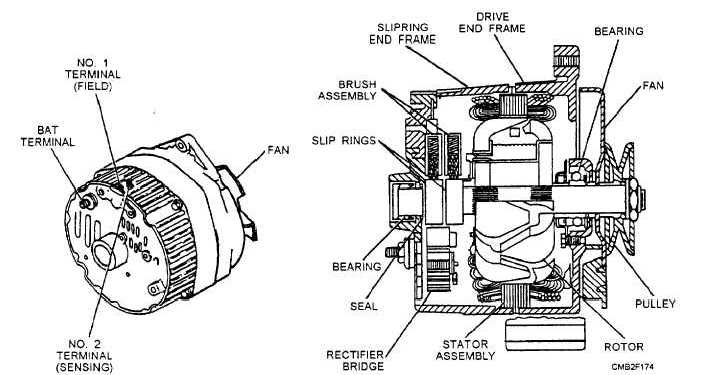armature core iron. Touch the other probe to each commutator segment in turn. If the armature is grounded, the bulb in the base of the growler will light. In contacting armature surfaces with the test probes, do not touch the bearing or the brush surfaces of the commutator. The arc would burn or pit the smooth finish. Replace the armature if it is grounded.
In testing individual armature coils for open circuits, use the test probes, as shown in figure 2-20. Place them on the riser part of adjacent commutator

Figure 2-20. - Testing an armature for open circuits.
bars, not on the brush surfaces. If the test lamp does not light, there is a break some where in the coil. Repeat this test on every pair of adjacent bars. Do this by walking the probes from bar to bar. Should you find an open coil, the fault may be at the commutator connectors where it is possible to make repairs with a little solder. If a coil is open-circuited internally, the armature should be discarded.
The alternator (fig. 2-21) has replaced the dc generator because of its improved efficiency. It is smaller, lighter, and more dependable than the dc generator. The alternator also produces more output during idle which makes it ideal for late model vehicles.
The alternator has a spinning magnetic field. The output windings (stator) are stationary. As the magnetic field rotates, it induces current in the output windings.
Alternator Construction
Knowledge of the construction of an alternator is required before you can understand the proper operation, testing procedures, and repair procedures applicable to an alternator.

Figure 2-21. - Typical alternator.
Continue Reading